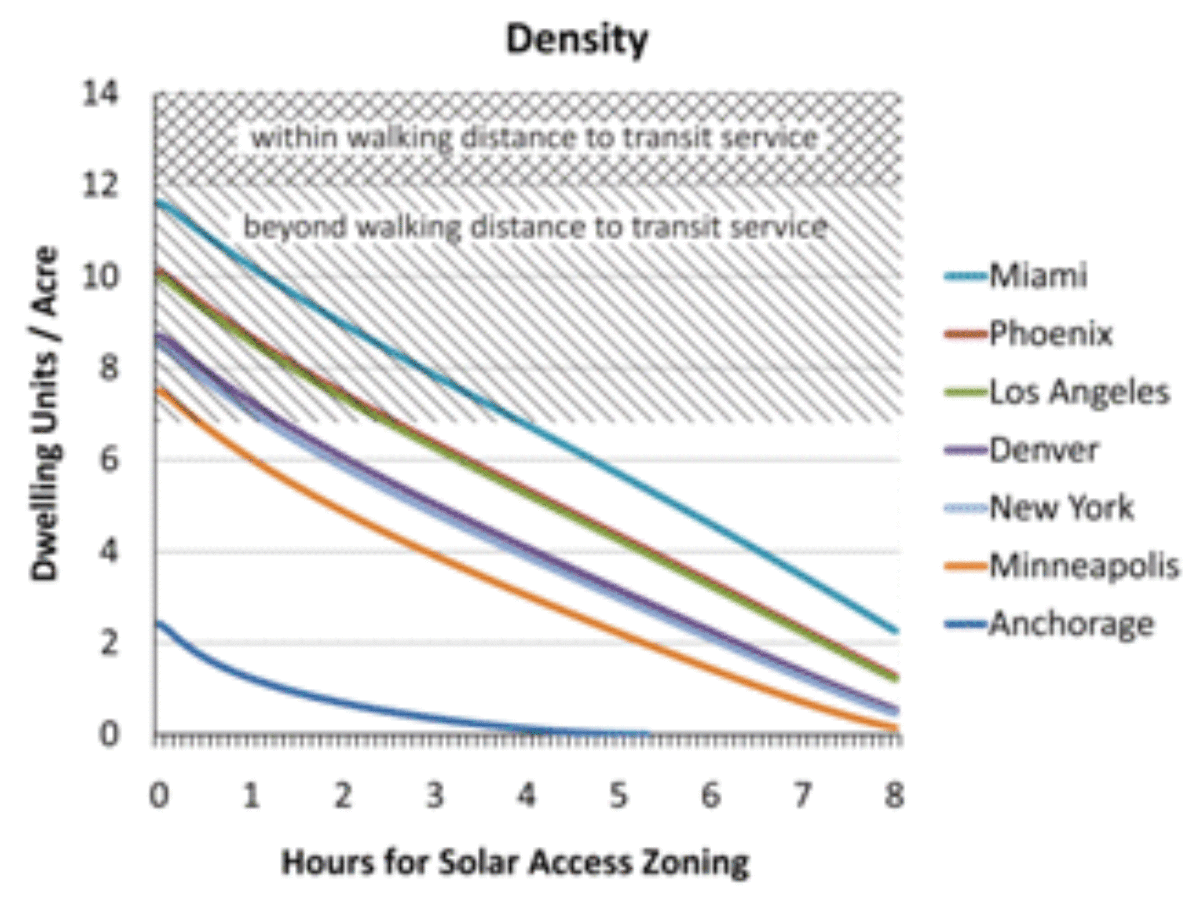Solar Zoning and Energy in Detached Residential Dwellings

The Solar Envelope is a three dimensional envelope on a site which ensures adjacent neighbors a specified minimum direct solar access time per day throughout the year. The solar envelope was developed as a tool to give buildings in an urban setting the mutual opportunity to employ passive and active solar design strategies. Parametric computer-aided-design (CAD) environments significantly ease the construction and visualization of solar envelopes across whole neighborhoods, facilitating its wider use as a prescriptive zoning tool. This study investigates the implications of a solar envelope zoning approach for the most common building type in the United States (US) with respect to energy use and developable density. The results indicate that solar zoning for this building type has a limited, and sometimes negative, effect on energy use as well as a larger negative impact on developable density.
Jeff Niemasz, Jon Sargent